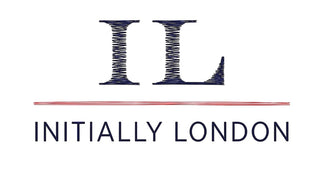We always look forward to Women's History Month in March because the most incredible and inspiring stories, both personal and professional, fill our inbox, social media channels, news feeds and art & music venues around London.
In our line of business, though, we celebrate women's work every month because embroidered monograms in general, and monogrammed linen specifically, have been largely women's work for centuries.
Did you know that the word "distaff" means both the mother's line of descent within a family as well as a tool for spinning flax in to linen? You can guess why.
And the tradition of monogramming linen grew out of the ancient English common law practice of coverture whereby a single woman had the right to own property, but a married woman lost that right as she 'merged' with her husband. The only assets women could retain after marriage were moveable ones such as furniture and linen. So women set to work ensuring that these assets were marked with a monogram to establish their ownership. Her own monogram, not her husband's.
While coverture began to be dismantled in the late 1800s, the tradition of using a woman's own initials for monogramming bedlinen and bath linen continue to this day.
For some really interesting reading on the history of linen and other textiles we highly recommend Worn: A People's History of Clothing by Sofi Thanhauser and The Golden Thread by Kassia St Clair.
